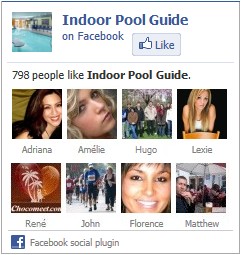
Swimming Pool Design
Overview
Pools are complicated structures and make serious demands on design, construction, operation and maintenance. One should be principally concerned with operation; however, design and construction are critical to successful operation. Design is the first issue to be considered for new and existing structures and should be addressed in collaboration with all parties responsible for design, construction and operation.
Water treatment systems are an integral part of the architectural, structural and mechanical design, and should be addressed from the very start of the project. Water treatment plant design must, initially and crucially, take into account potential bathing load, circulation rate, turnover and dilution, choice of treatment system, filtration, circulation hydraulics, plant room and operation. Overall, the design must conform to the appropriate standards or guidelines for maintaining safety and the chemical and microbiological quality of the water.
Although this article cannot give advice on the details of design, it does indicate the areas that need to be covered in a design brief. Finally, there is advice about obtaining specialist design and contracting help.
Design Brief
Water treatment is just one factor within the design of what may be a multi-use leisure complex. The starting point for design is a full assessment of community needs and potential demands, which also takes into account existing facilities. Depending on the particular project, there may have been a strategy prepared, a multi-discipline project team appointed, a feasibility study commissioned, and decisions made on location and finance. The end of this stage should result in the appointment of a pool manager and an architect qualified in pool design retained. The pool manager and architect should work together to produce a design brief that will consider the type of facility proposed.
The design brief should consider:
– The type and amount of use envisaged, for example: swimming, therapy, education or leisure.
– Structural features, such as moveable floors or booms to convert competition or diving pools into teaching or leisure pools.
– Joint-use arrangements.
– Possible shared treatment plant for different pools.
– Changing rooms and their accessibility.
– Street access to the facility.
– Fire and emergency evacuation. It is uncommon for one person— consultant, architect, manager, pool operator or other staff—to be familiar with or have expertise in all these technical issues. However, persons responsible for a new building or alteration do need to be aware of the following important areas, and take them into account when working on the design of a pool complex.
Bathing Load, Circulation Rate and Turnover
Bathing load dictates the rate of circulation or turnover period required. Bathing load and pool volume should be considered together to determine the size of filtration plant and the choice of water treatment system, which makes these issues central to good water quality.
WaterTreatment
From a design perspective on water treatment, the following factors should be considered:
– Pool type (recreation, hydrotherapy, toddlers, spa and so on)
– Pool temperature
– Method of removal of suspended and colloidal matter
– Oxidising agents
– Disinfection system
– Coagulants
– pH adjustment
– Water balance
– Fresh water dilution
– Effects on air quality
– Plant size and operation
– Plant personnel; training
– Water testing and recording
– Plant monitoring and control
– Energy and operation costs
– Chemical storage and handling.
Hydraulics
The design of water movement demands attention to:
– Pool size and shape (including profile).
– Size, number and location (including safety considerations) of pool water inlets and outlets.
– Design and correct sizing of the filtration plant, including filters and filtration rates.
– Size and routing of circulatory pipework.
– Size and location of balance tank.
– Water circulation within the balance tank.
– Transfer channels.
– Pumping and location of sump pump.
– Integration of water features.
– Moving floors and booms.
– Effect of evaporation (normal and induced by water features) on relative humidity in the pool complex.
– Effect of water movement on noise levels.
– Pool location.
Plant room
Many issues need to be considered at the design stage:
– Size and location of plant room, taking into account filter specifications, the scale of other water treatment plant, flooded pump conditions and short suction pipework lines.
– Location of other plant items and ductwork.
– Plant layout for ease of operation and maintenance.
– Interfaces and coordination with other building elements including ventilation intakes (well away from plant room and chemical stores).
– Access for plant replacement/refurbishment.
– Access for chemical deliveries.
– Special bunded storage areas for chemicals.
– Waste water and drainage requirements.
– Health and safety requirements.
– Plant room environment relating to temperature, humidity, ventilation and noise.
– Builders’ work requirements.
– Electrical requirements.
Specialist Help
Successfully building or substantially refurbishing a swimming pool demands a full understanding of the distinction between design and installation. It is also important that the responsibility for issues of design and installation is clearly identified.
Who Designs the Pool?
Water treatment design requires specialist engineering knowledge, which needs to be recruited together with the architect and structural and environmental service engineers. This knowledge, which is critical to producing a satisfactory design, is available from two sources:
– Consultants—who can provide independent specialist advice and who are appointed as full members of the design team.
– Contractors—who can work to the consultants’ brief and specifications, to their own schedule or a client’s.
Bathing Load and Circulation Rate
Bathing load is a difficult issue in pool water management. There may be pressure to maximise income by overloading the pool. For a new pool, at least, there is no excuse for not planning and maintaining a realistic relationship between bathing numbers and pool and treatment plant capacity.
The pool capacity should be determined at the design stage.

